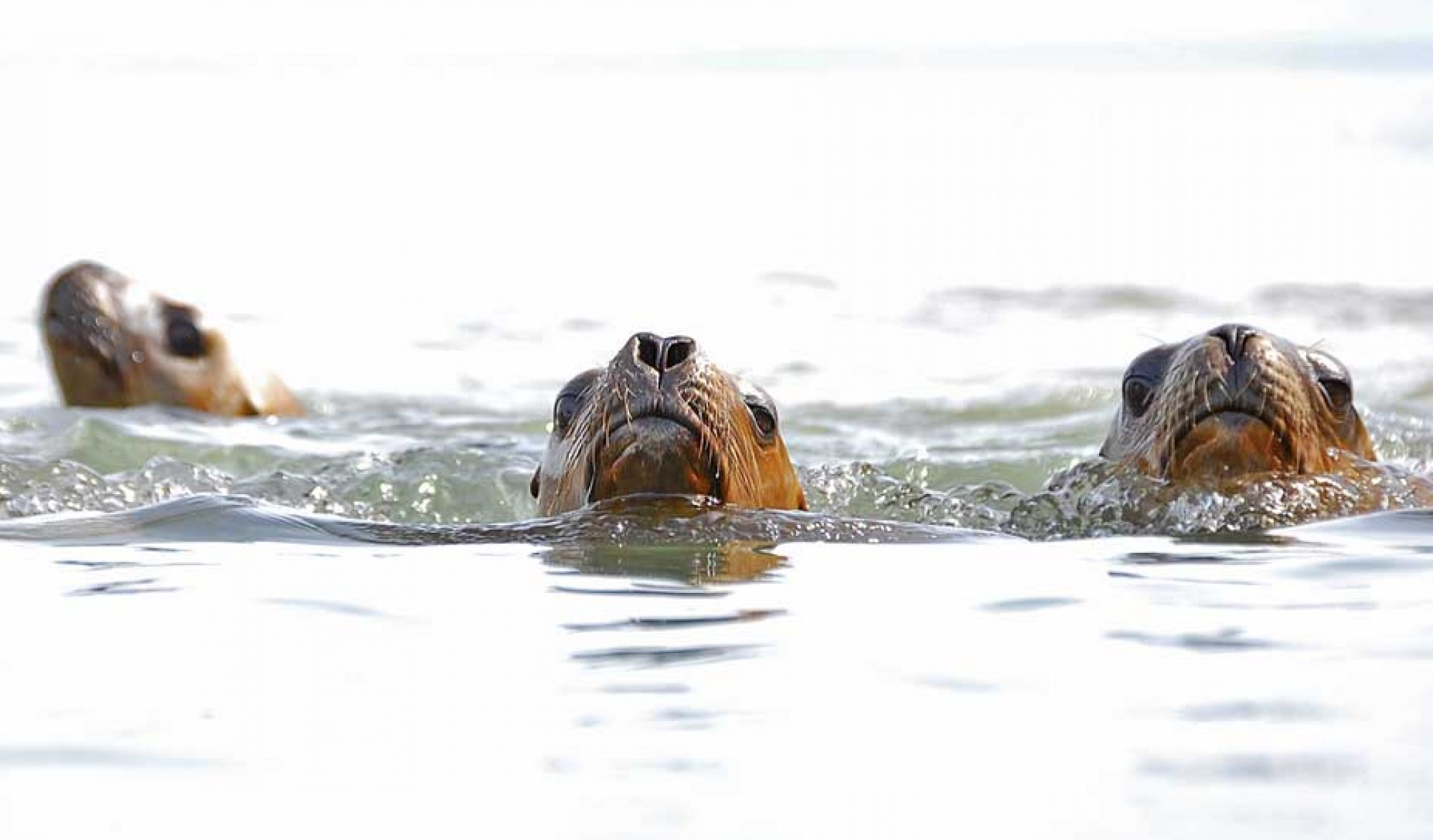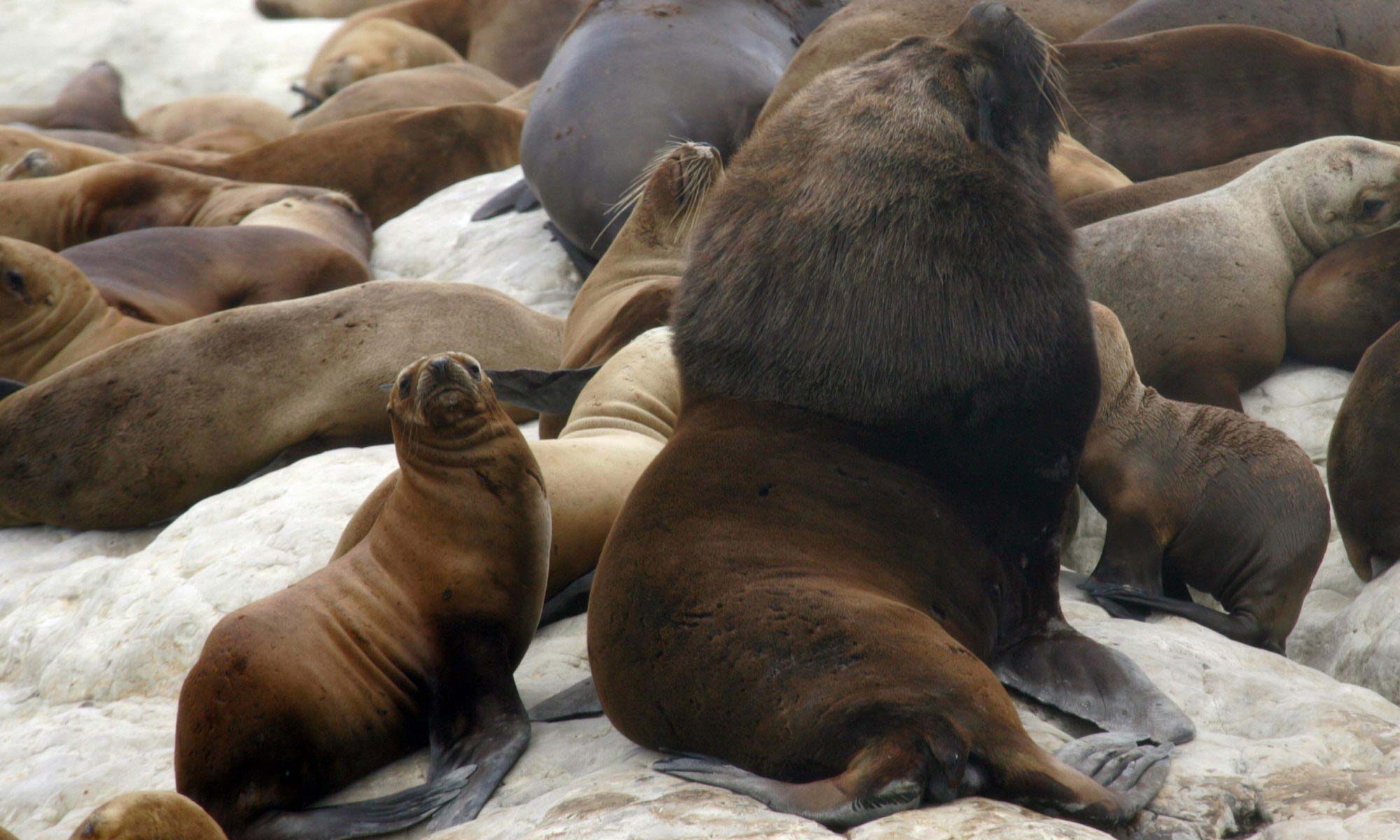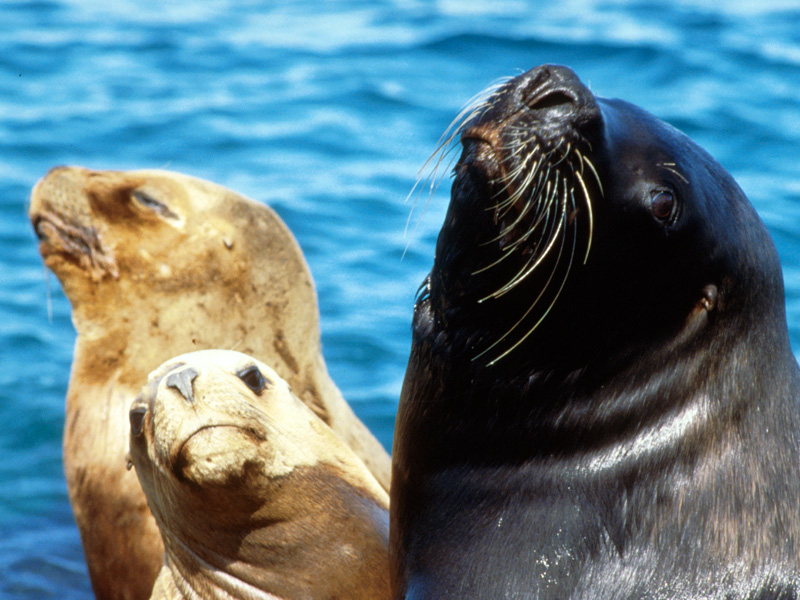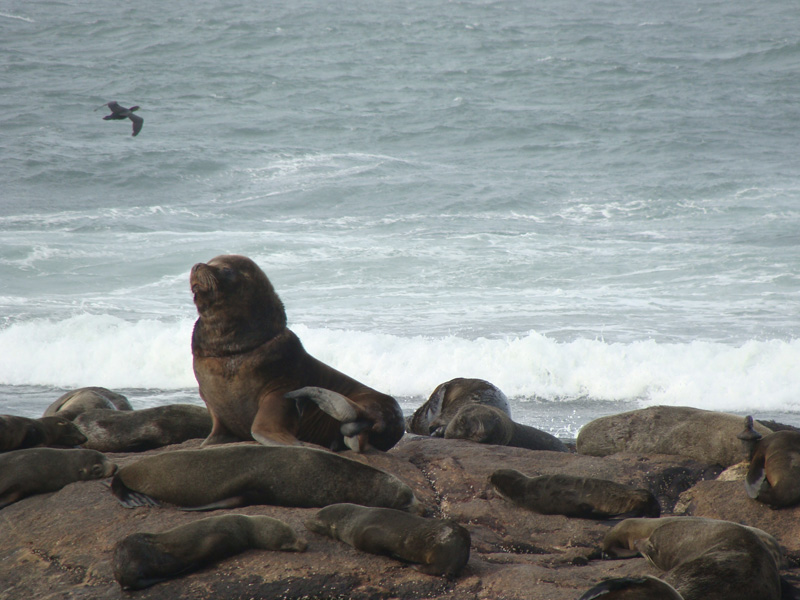Seals - Maned seals (Otaria flavescens) belong to the eared seal family and are also known as South American sea lions. Their range extends along the Atlantic and Pacific coasts of South America from southern Brazil, Argentina and Chile to southern Peru and the Falkland Islands.
As with all eared seals, the bulls of maned seals are significantly larger than the females. Males reach a weight of up to 350 kg and over 2.5 m, while females only weigh up to approx. 150 kg. The bulls have a distinctive, usually lighter-colored mane.
The maned seals live together in their colonies in so-called harem groups. During the mating season in the Australian summer (December-February), bulls gather up to ten females around them and defend their harem against competing bulls.
Males and females differ not only in weight and body size, but also in their hunting behavior. In general, South American sea lions feed mainly on benthic fish. While females mostly hunt in areas close to the coast, males dive much deeper and further away from the coast for fish. The seals' tactile hairs - the so-called vibrissae - are able to detect even the smallest turbulence in the water. This enables the maned seals to find their prey even in the dark or in murky waters.
Maned seals were hunted intensively, especially at the beginning of the 19th century, which led to a drastic decline in the global population. They are now protected everywhere, the population has recovered and the IUCN classifies the maned seal as not endangered.
Seal project | 30 years of YAQU PACHA e.V. | Videos | Membership | Summary of a successful workshop | Report on our workshop day 2 | YAQU PACHA e.V. board | Species protection | Species that YAQU PACHA is working to protect




